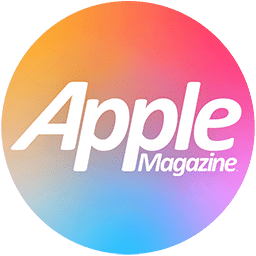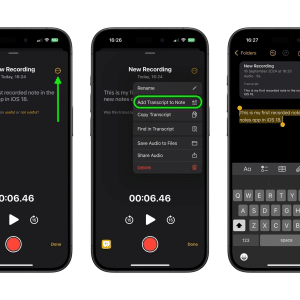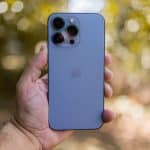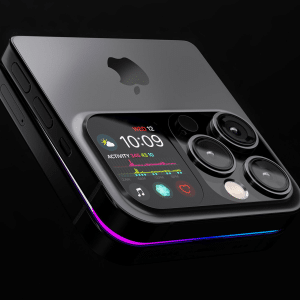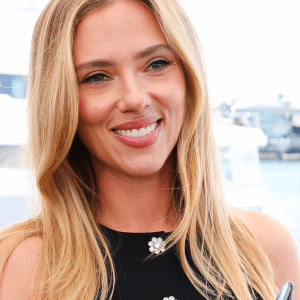 As the unveiling of the next-gen iPhone draws nearer, rumors about it grow in number and in complexity. It seems like we already know everything about the iPhone 6. Will the actual product surprise us even a little?
As the unveiling of the next-gen iPhone draws nearer, rumors about it grow in number and in complexity. It seems like we already know everything about the iPhone 6. Will the actual product surprise us even a little?
What we imagine, what we speculate, and what is true are not all the same thing. Anyone can tell you that. But we seem to forget this in making guesses at Apple’s new products. Following the fantasies and speculations without remembering the facts leads to disappointment when the real thing isn’t as impressive as we built it up to be. It pays to keep in mind that the rumor mill is mostly a construct to build hype as a method of free advertising for companies, hardly anything more.
So what do we actually know about the upcoming iPhone? And what is just speculation?
The iPhone will almost certainly have a bigger screen.
Though Apple’s smartphones are their biggest moneymakers, they aren’t doing as well as usual. According to market researcher IDC, the iPhone’s global market share plunged from 23 percent in the 4Q11 to just 12 percent in 2Q14. Samsung is taking the lead with a 25 percent market share for 2Q14.
What Apple is betting on to improve the situation is something the iPhone doesn’t have: a larger screen.
Samsung made famous the “phablet”, a smartphone with a larger screen. It caters to a large audience and has led to success in their smartphone sales. No doubt Apple is going to try cashing in on this idea with its newest iPhone.
In the past, both the late and current CEOs of Apple have emphasized that the iPhone is designed for easy one-handed operation and, for that reason, resisted the phablet trend. That is, until Samsung started selling phablets and raking in cash. The appropriate response to the competition was clear.

The Wall Street Journal reported in July that Apple asked suppliers to produce between 70 million and 80 million units by December 30 this year. For Apple, the hope is that consumers will gravitate more toward a larger screen. Jan Dawson of JackDaw Research stated, “There are people out there who are currently using an Android device simply because the iPhone doesn’t offer an option in the screen size they want to use…A phone in the 4.7-inch range will win many people back from Android — and many of them from Samsung.”
So we’re betting on a 4.7-inch display. Plausible, right? Leaked photos suggest that a larger screen may not necessarily inhibit one-handed usage, and Apple can easily shrink the bezel on the sides of the phone or the area above the home button.
The other side of the rumor is that Apple will be releasing another, much bigger version of the iPhone 6. People are talking about a 5.5-inch screen, definitely phablet proportions. However, if it launches at all, reports are saying that this version of the iPhone may not ship until 2015.
We will probably see better components.
For all its previous models, Apple has included a new company-designed processor, and this time around should be no different. Historical nomenclature would point to “A8” as the new chip’s name. Each subsequent processor has allowed the iPhone to run faster and more efficiently.
Take, for example, the iPhone 5S’s A7 chip. It was the first 64-bit mobile processor and was far better than the 32-bit processors once common in smartphones and tablets. The A7 processor enabled the iPhone 5s to run faster apps that deal with larger amounts of data. And Apple never releases a new processor chip without an updated operating system, and we know for sure that we’re getting iOS 8 soon.
We might also get more out of the sensors in the iPhone 6. The M7, a motion co-processor introduced in the iPhone 5s, works with the main processor to “continuously measure motion data from the phone’s accelerometer, gyroscope, and compass without draining battery life.” When it was created, the M7 was thought to be an enabler for more and better health and fitness app. Currently, however, only a handful of apps—like Nike + Move and StravaRun—actually use the chip.
But with Apple’s new iOS 8 HealthKit, the M7 will get a little more love. HealthKit, a data hub Apple device users can use to track their health, was introduced at the Worldwide Developer Conference in June. Included is the corresponding Health app, whose full potential we will see when Apple finally steps into the wearables category, though the app does work with third-party devices.
It’s likely that Apple will improve or at least stabilize battery life, and it’s likely, too, that the iPhone 6 will have an even better, higher-megapixel camera than in the iPhone 5s.
An NFC (near-field communications) chip may be in the works as well. An NFC chip will allow two devices in close proximity–we’re talking one inch apart or less–to trade small amounts of data, like credit card information or coupons. The inclusion of an NFC chip is not a certainty, but it is a likelihood as Apple progresses naturally in mobile payments.
The iPhone 6 probably will not have a sapphire display.
Though sapphire is a harder material than Gorilla Glass, Apple’s current display screen material, it’s more expensive. The premium look and feel of the sapphire could boost sales. Or the costliness of the material would jack up the price of the new iPhone, making it a hard sell that may dent Apple’s profits.
As it has done with the iPhone 5s, Apple will continue using sapphire crystal for the home button and for the camera lens. These small areas won’t rack up such a high price, and there is more guarantee that they will last. A larger surface area of sapphire, though it is harder than most materials, might not have the flexibility necessary to ensure durability. The sapphire’s hardness might actually make it a more brittle material to use.
In the end, we’ll just have to wait and see what Apple brings us. The unveiling of the iPhone 6 is slated for a media event on September 9th. Until then, try to separate the “absolutes” of the phone from the “maybes” and the “maybes” from the “probably nots”.

